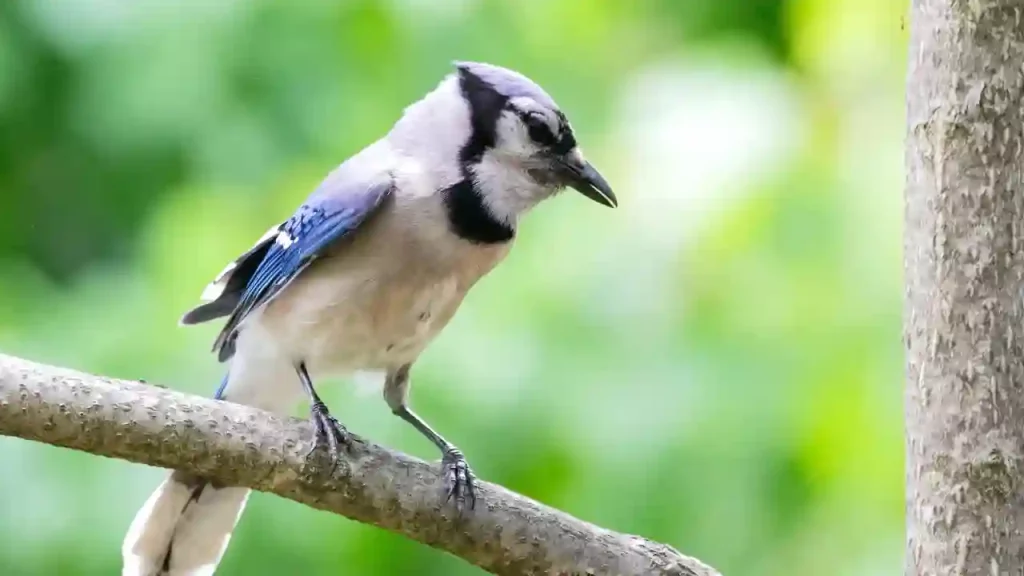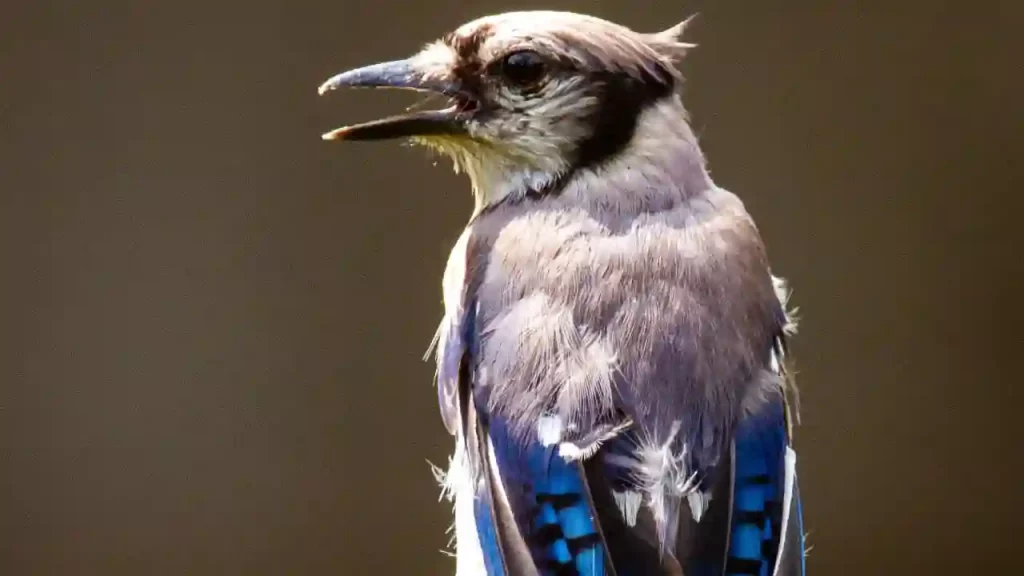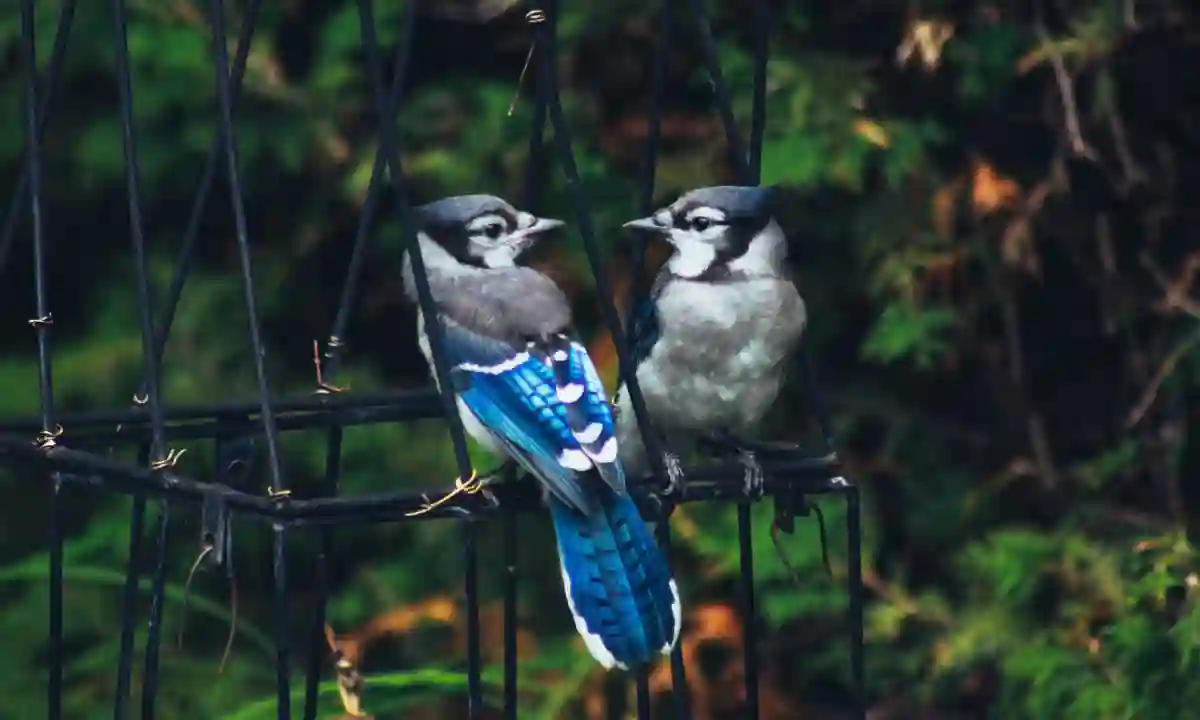These blue-hued and white-bellied songbirds typically dot the southern stretches of Canada and North-eastern America in the Spring. They flaunt a prominent crest and a black necklace shape mark around their throat giving them their distinct appearance.
So, do Blue Jays Mate For Life? Yes, they mate for life and as they are monogamous, mating for life means that they have a single partner with whom they reproduce, build nests and raise their young ones just like humans.
Now that we have already compared them with humans, are there exceptions like humans? Yes, absolutely. Whenever a female loses its partner, it finds a new one to mate with, or in instances when it can’t reunite with its previous mate following the winter flocking in the breeding season, it finds a new mate.
However, these are aberrations and blue jays generally follow monogamy; they stick with a single partner for life.
When do Blue Jays Mate?

Blue Jays have an average lifespan of 7 years though exceptional cases have been registered where they have lived up to 17 years.
Blue jays start mating when they are a year old or maybe even sooner. Due to the limited lifespan of bluebirds, this is viewed as positive since they have only a little time in their hands to produce as many offsprings as they can.
The breeding season starts from mid-March to mid-July. During this period, birds build their nests, females lay eggs, and hatch their young ones.
The whole process of egg laying, incubation, and hatching usually takes between 17 and 21 days.
The mates remain together until the winter when they separate for winter flocking and young ones leave the nest when their wings and muscles have matured.
How do Blue Jay Mate: – The Interesting Mating Ritual?

Blue jays build enduring ties with their partners and remain devoted to them until one of them passes away.
Even more intriguing than that these birds mate for life is their intricate, fashioned in a tribal-like manner and rather a peaceful mate selection process.
In the process, a male blue jay must first pass a series of tasks and tests to establish his value as a female’s partner before he can mate with her.
Every year, the start of May is supposedly when courtship starts. Blue jays would congregate on top of trees in groups of seven or more, with one female present in each flock.
As this ritual happens, the female takes off a flight and male jays pursue her until she lands somewhere.
Then, to get the attention of the female, the males start whistling and singing while bobbing their heads up and down in a boasting manner.
The female will subsequently, of course, select her partner, and the nesting cycle will then begin.
One by one, the males start quitting the fight voluntarily in every cycle without fighting or being expelled by the female, choosing instead to let the other males continue to struggle.
The procedure then repeats itself as the female flies around once more, settles on a treetop, and waits for the males to arrive and call, whistle, sing, and bob once more until another male departs.
Eventually, a female blue jay chooses her partner at the end when only one is left of the whole flock.
The chosen one then deepens his relationship by feeding the female. This skill is highly important since it evaluates the male’s capacity to provide for his future family.
Additionally, the male provides particular twigs, which the female carefully inspects before placing them in the potential nest. Post this elaborate and ceremonious selection, the blue jay couple then mate.
How do Blue Jays Build Their Nest?
Once these beautiful and blue-hued birds have selected their prospective partner from a flock of birds following the wooing phase, the couples of blue jays start constructing their nest.
They fly away from the flock and look for a place to start building their nest once the female has chosen the male from numerous rival jays. A hardwood tree, an evergreen, a power pole, or even a windowsill, typically serves as a potential nesting location.
The female jay initially inspects the unique twigs that the male jay brings for her. The duo then searches for larger twigs to use in building a platform if they agree that the site is appropriate for building their nest.
They, then develop an interior cup consisting of softer elements, such as roots, grass, and vines after about two days.
Birds in urban settings make nests with whatever is at hand, whether it is paper, towels, candy wrappers, or scraps of fabric.
How do Blue Jays Raise Their Babies?
A female blue jay lays around three to six eggs at a time. The eggs are often colored blue, green, or yellow with brown and grey markings.
The female incubates the eggs the majority of the time even though the males occasionally assist the female in this task. About 17 to 18 days are passed in the incubation stage.
In this period, it is the charge of the male blue jay to search for food for his partner and later, once the eggs have hatched, for his young. While the male goes food hunting, the female jays typically spend the majority of their time in the nest incubating the eggs.
The male returns with the food and feeds the female the contents in his gular pouch in a neighboring tree without disturbing the eggs.
Both parents partake in the task of finding food as the hatchlings grow.
The baby blue jays already become capable of feeding themselves at three weeks, however, they do not depart from the nest until they are two months old and stay with their parents till then.
Final Thoughts: Do Blue Jays Mate For Life?
Blue Jays form the rarity of creatures in the animal kingdom that are known to be monogamous. They mate with a single partner for their entire life though when a partner dies, a female jay is compelled to look for another partner to reproduce.
The mating pair remains together throughout the breeding season, and separates for the wintering flock but reunites quickly before the next spring season knocks.
Frequently Asked Questions (FAQs)
What are the best places to spot a blue jay?
Their habitat stretches from Southern Canada to Northern and Central America reaching up to Texas.
They are widespread in suburban and urban settings, particularly where there are oak trees or bird feeders.
You can visit a natural park on the eastern coast; there’s a high chance you can spot one of them in spring.
Are blue Jays aggressive birds?
Although blue jays are notorious for their aggressive behavior, they are far less aggressive than many other species such as Red-headed Woodpeckers, Florida Scrub-Jays, etc.
They raise their crest when they are belligerent. The level of their hostility can be gauged by the level of their crest.
They usually keep their crest down during nest-building, nest-feeding, or interactions with a partner, family, or flock member.
What do blue Jays feed on?
Blue jays feed on acorns, collect insects, and consume nuts and seeds from trees, bushes, and the ground. They also lift and eat tiny vertebrates that are deceased or injured. Blue jays can also take for food eggs and young birds as well as dead or dying adults by raiding other nests. (For More detailed information check our post “What Do Blue Jays Eat?”


